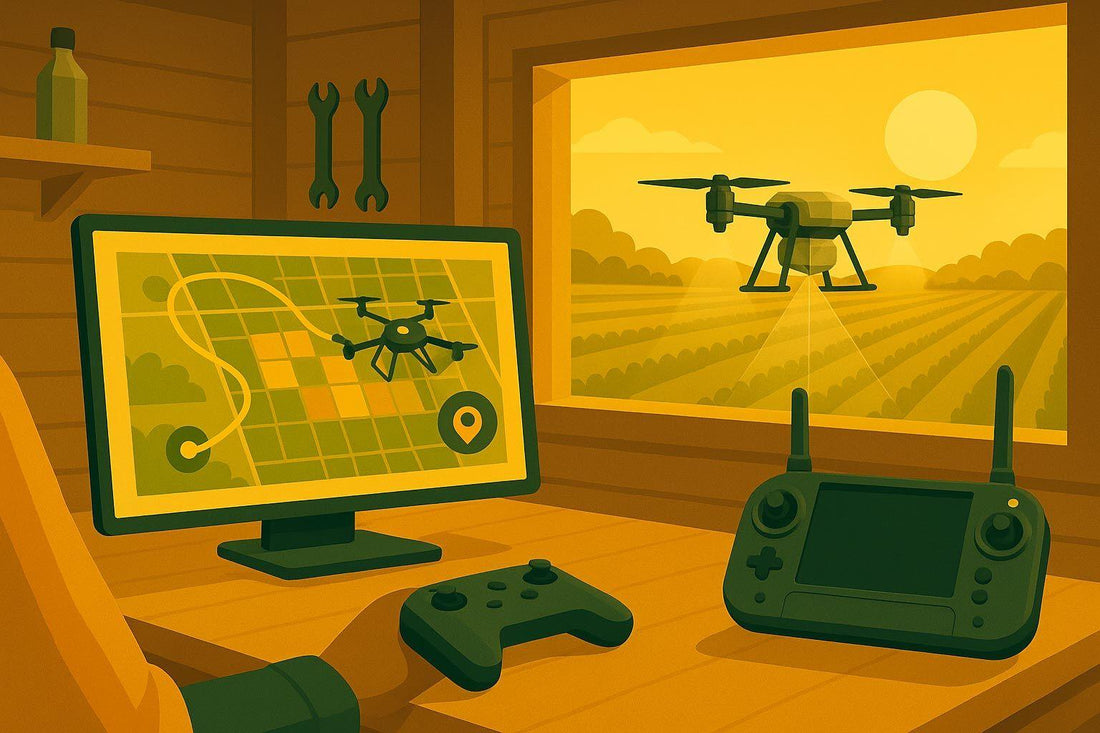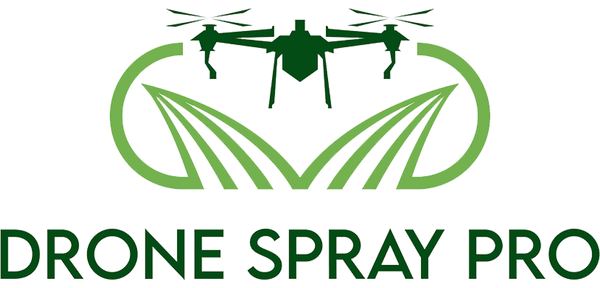
Complete Guide to Agricultural Drones: Spraying & Mapping
Share
The agricultural industry faces mounting pressure to achieve higher efficiency, sustainability, and productivity. In this evolving landscape, drones are emerging as transformative tools, offering precision, cost savings, and actionable insights. Whether you're an experienced farmer, a farm manager seeking modern solutions, or an entrepreneur aiming to start a drone-based agricultural service, this guide will provide you with a comprehensive understanding of how drones are revolutionizing agriculture.
Introduction: A New Era in Farming
Imagine inspecting hundreds of acres of crops, identifying problem areas with pinpoint accuracy, and delivering targeted treatments - all without leaving your property. Agricultural drones make this vision a reality. These cutting-edge technologies offer solutions for crop health monitoring, pest control, spraying, and even livestock tracking, significantly reducing time and labor costs. But how do you get started? What are the opportunities and challenges? This guide will break down everything you need to know.
Key Applications of Drones in Agriculture
Drones are versatile tools that can support a variety of operations in agriculture. Below are the two core use cases highlighted in the discussion:
1. Crop Health Monitoring
Traditional crop monitoring involves time-intensive manual inspections or costly, less precise methods like airplane flyovers. Drones, equipped with advanced sensors, provide a faster and more accurate way to assess crop health.
- How it Works: Drones with multispectral cameras scan fields, analyzing how sunlight reflects off vegetation. The resulting data is processed into NDVI (Normalized Difference Vegetation Index) maps, which highlight crop health using colors - green for healthy crops, yellow for caution, and red for areas requiring immediate attention.
-
Advantages:
- Saves time and labor by automating crop inspections.
- Provides highly localized data, identifying problem areas down to individual plants.
- Reduces unnecessary pesticide or fertilizer applications, promoting sustainability.
- Drone Examples: Models like DJI's Matrice 3M or other multispectral-equipped drones are popular for this use case.
2. Precision Spraying
Crop spraying drones address one of the most resource-intensive tasks on farms, offering precise chemical application at a fraction of the cost of traditional crop dusting.
- How it Works: These drones carry tanks of pesticides, herbicides, or fertilizers, targeting specific areas identified through crop health maps. With adjustable nozzles and automated flight paths, they cover only the necessary sections of a field.
-
Advantages:
- Cost Efficiency: Cheaper to operate than manned crop-dusting planes, with no need for highly skilled pilots.
- Precision: Minimizes chemical use and environmental impact, focusing only on areas that need treatment.
- Safety: Removes the risk to human pilots, especially in hazardous, low-altitude flights near power lines or other obstacles.
- Drone Examples: Heavy-duty models like DJI Agras T50 are designed specifically for large-scale spraying tasks.
The Economics of Drone Adoption in Farming
For many farmers, the primary question is whether investing in drones is worth it. The answer depends on factors like farm size and specific needs. Here’s a breakdown:
For Small Farms:
- Applications: Crop inspections, pest monitoring, and selective spraying.
- Considerations: Smaller drones with multispectral sensors, such as the DJI Mavic 3M, provide an affordable entry point while offering significant value in crop health monitoring.
- Advantages: Reduces dependency on external contractors for manual inspections or spraying.
For Large Farms:
- Applications: Crop inspections and large-scale precision spraying.
- Considerations: Investing in advanced drones like the DJI Agras T50, which can carry large payloads and cover significant acreage, is vital for maximizing ROI.
- Advantages: Drastically lowers costs compared to traditional crop dusting and enables better resource planning.
Navigating Regulations: What You Need to Know
Operating drones for agricultural use in the United States requires compliance with Federal Aviation Administration (FAA) regulations. Here's what you need to get started:
Part 107 Certification
Part 107 Certification is the foundational requirement for any commercial drone operation, including agricultural applications. It certifies that you understand airspace rules, safe flight operations, and drone handling.
Part 137 Approval
For crop spraying, you'll need a Part 137 certification, which is more rigorous due to the involvement of hazardous materials like pesticides. To obtain this:
- Submit an Application: Complete FAA Form 8710-3 for agricultural operations.
- Prepare an Operations Manual: Document procedures for drone use, chemical storage, emergency plans, and safety protocols.
- Pass a Practical Test: Demonstrate your ability to operate the drone safely and in adherence to your operations manual.
- Maintain Accurate Records: You’ll need to log flight hours, pesticide usage, and any incidents for FAA audits.
State-Level Requirements
Some states may require additional certifications or permits for pesticide application. Check with local agricultural offices to ensure compliance.
The Future: AI and Beyond
Artificial intelligence (AI) is shaping the future of drone-based agriculture, pushing boundaries of automation, precision, and efficiency.
AI-Driven Insights
- AI-powered drones can analyze historical crop data and predict trends, helping farmers make proactive decisions to optimize yield.
- AI can also manage multi-drone fleets, orchestrating simultaneous spraying and monitoring operations across expansive fields.
Autonomous Operations
- Future systems may integrate AI, drones, and sensors into a fully automated ecosystem. For instance, inspection drones could relay real-time data to spraying drones, which would then target problem areas without human intervention.
Scaling Potential
- As AI and automation improve, even small farms will be able to leverage sophisticated tools that were previously only available to large operations.
Challenges and Opportunities
While the potential of drones is enormous, there are a few challenges to keep in mind:
- Cost of Entry: High-end drones and sensors can be expensive, although prices are gradually decreasing.
- Learning Curve: Farmers will need to invest time in acquiring drone and software skills or hire professionals.
- Regulatory Complexity: Navigating FAA rules and state-level agricultural regulations requires careful planning.
However, these challenges are opportunities in disguise for entrepreneurs. Offering drone-based agricultural services, such as crop health monitoring or precision spraying, is a growing niche with high demand and relatively low competition.
Key Takeaways
- Drones in agriculture excel at crop health monitoring and precision spraying, reducing costs and environmental impact.
- Multispectral sensors identify crop health issues with NDVI maps, enabling targeted interventions.
- Precision spraying drones like the DJI Agras T50 offer an alternative to traditional crop dusting, cutting costs and increasing yield.
- Part 107 certification is essential for any agricultural drone use, while Part 137 approval is mandatory for spraying.
- AI integration promises fully autonomous operations, predictive analytics, and multi-drone orchestration.
- Scaling opportunities exist for both farmers and entrepreneurs, with room to grow as adoption rises.
- Farm size matters: Small farms can benefit from entry-level drones, while large farms may need high-capacity UAVs for spraying.
- Record-keeping and compliance are critical to sustaining drone operations and avoiding regulatory issues.
- Now is the time to explore the potential of drones in agriculture as adoption and innovation accelerate.
Conclusion
The integration of drones into agriculture is no longer a futuristic concept - it’s happening now. From increasing crop yields to reducing environmental impact, drones are transforming how we approach farming. For farmers, agricultural managers, and entrepreneurs, the key is to start small, learn the technology, and stay ahead of the curve. With ongoing innovations in AI and automation, the possibilities are endless. The future of farming is here, and it’s flying high.
Source: "The Flight Path - Drones In Agriculture"
